If you work with Eurorack Synthesizers you usually have individual modules with envelopes, LFO, sequencer etc. Of course, these modulation modules takes away enough space in your rack which can be used for other interesting add-ons. With the new Stages, Mutable Instruments introduced this week a new Eurorack that can be described as powerhorse / swiss army knife.
It’s not just an ASR envelope but also a complex 6-stage envelope, LFO, 4-step sequencer or switched LFO. Stages can be any kind of modulation you want in one module. Although these features are already very exciting, Oliver (Mutable Instruments) doesn’t stop here and develop always these ideas further. For this reason, this module also features a segment generator for advanced modulations. With this feature, you can split the modulations in different segments and create very complex modulations.
The Modulation Construction Set
ASR envelope, complex 6-stage envelope, LFO, 4-step sequence or switched LFO: Stages can be any kind of modulation. Not because all these behaviors have been pre-programmed in the module, but because it allows you to describe your own modulations in terms of basic operations: ramp from one voltage to another, hold a voltage at a set level, wait for a trigger and slew. With or without looping. Whether you need one complex envelope, or several simpler modulations, Stages reconfigures itself according to which of its gate inputs are patched. There is always a role for it in your patch. Self-generating chiptunes? Very weird LFO shapes? Random gate delay? Stages probably does strange and wonderful things when patched in a certain way.
Features
Flexible Input/Output /Layout
The module detects the presence of jacks on its gate inputs to group its segments: whether it is configured as a complex 6-stage envelope, or 6 individual envelopes, or 3+3, 2+4… depends simply on how you patch it. Dummy patch cables might come handy! When used as a multi-segment envelope, a segment activation signal is produced on all secondary outputs – for example to trigger an external event when an ADSR envelope enters its decay, sustain or release stages. In case more than 6 segments are required, up to six modules can be chained together thanks to a connector at the back of the module.
Three Segment Types
- Ramp segments go from one voltage to another, in a CV-controlled amount of time, with an adjustable curve (accelerating, uniform, decelerating). They are the building block used for the attack, decay or release segments in envelopes… or for LFOs.
- Hold segments stay at a constant (but CV-controllable) voltage for a programmable amount of time. They serve as the sustain or hold segments in envelopes.
- Step segments glide to a target (CV-controllable) voltage, then stay at this voltage for a certain amount of time until a trigger is received. They are the main ingredient for step sequences, but also for building sequential switches or a sample-and-hold.
Looping
A segment, or a group of segments, can loop on itself: if the last segment of the envelope is included in the loop, the loop lasts forever. Otherwise, the loop remains active while the gate is high, then continues past the last segment of the loop. These two behaviors allow the creation of self-looping envelopes (LFOs), or the sustain stage of a good old ADSR envelope!
Single Segment Processing
Even when they aren’t part of any group and don’t receive any gate or trigger signals, individual segments can perform interesting functions: Ramp can loop on itself and turn into an LFO, Hold can delay a CV and Step can slew it.
Now patch a trigger signal: the self-looping Ramp turns into a tempo-synced LFO, the Hold segment becomes a pulse generator, the Step segment a sample-and-hold.
Specifications
- CV output: from 0V to +8V. A negative CV down to -8V can be generated by a Hold or Step segment if this segment is CV modulated.
- Segment duration from 1ms to 16s.
- All inputs: 100k impedance, DC to 2kHz.
- 31.25kHz refresh rate.
- 16-bit CV capture, 14-bit CV generation with accurate software calibration. Error below 2mV.
Mutable Instruments Stages is now available for 299€ from any retailer.
More information here: Mutable Instruments

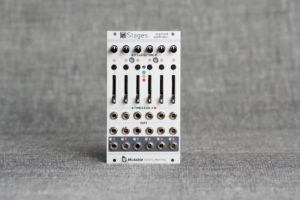
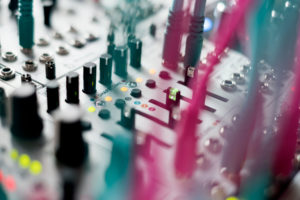
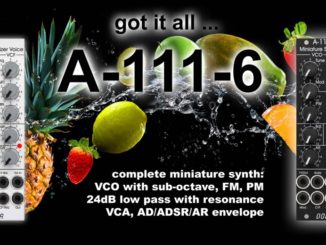
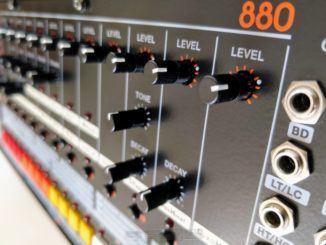
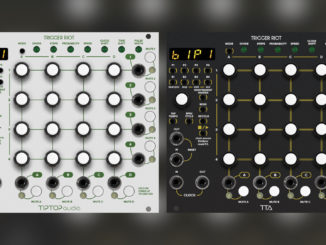
Be the first to comment